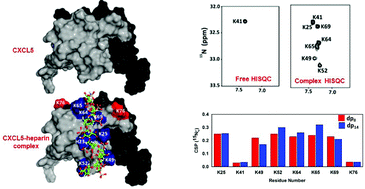Direct detection of lysine side chain NH3+ in protein–heparin complexes using NMR spectroscopy
Abstract
Two NMR observables, the NζH3+ peak in the HISQC spectrum and Nζ chemical shift difference between the free and heparin-bound forms, can identify binding-interface lysines in protein–heparin complexes. Unlike backbone chemical shifts, these direct probes are stringent and are less prone to either false positives or false negatives.



 Please wait while we load your content...
Please wait while we load your content...